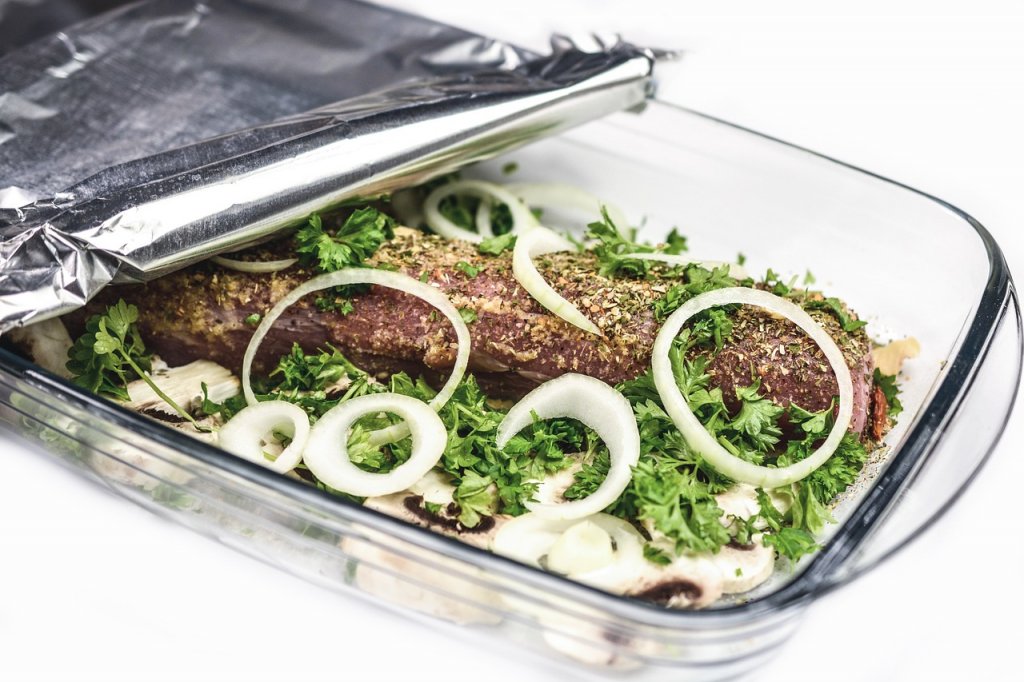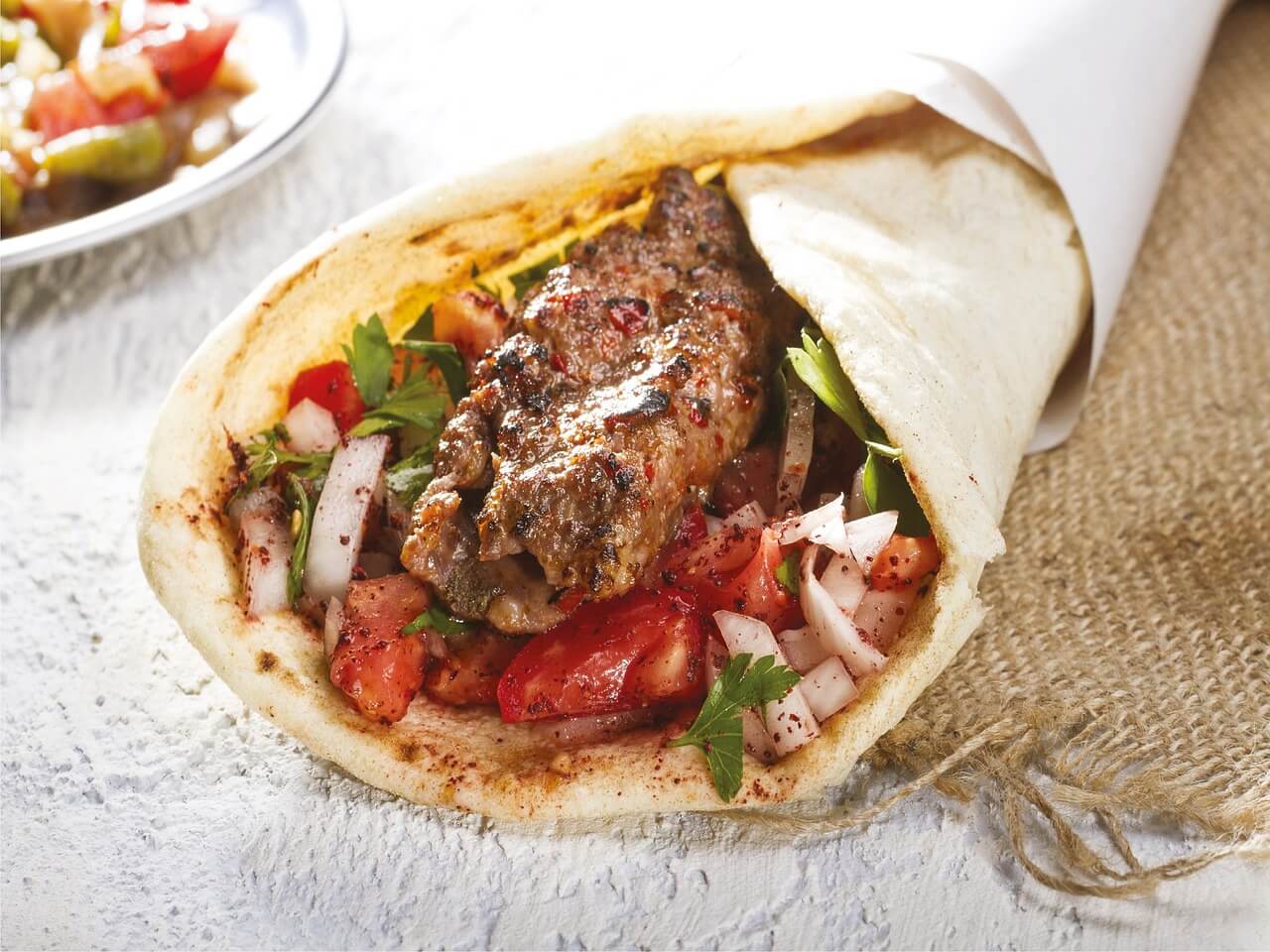Forget the processed lunchbox bologna of your childhood. Lebanon bologna is a revelation, a cured meat with a rich history, a unique flavor profile, and a special place in the heart of Pennsylvania Dutch cuisine. Buckle up, because this article will be your one-stop shop for everything Lebanon bologna. We’ll delve into its fascinating origins, explore the production process that imbues it with its distinctive taste, and uncover the best ways to enjoy this regional treasure. So, grab a virtual fork and dig in!

Contents
- 1 Unveiling the Mystery: What Exactly Is Lebanon Bologna?
- 2 A Journey Through Time: The Production Process of Lebanon Bologna
- 3 A Symphony of Flavors: The Unique Taste of Lebanon Bologna
- 4 Slicing and Serving: How to Enjoy Lebanon Bologna
- 5 Savor the Flavor: Serving Suggestions and Culinary Delights
- 6 DIY Delights: Crafting Your Own Lebanon Bologna
- 7 Conclusion: Embracing the Richness of Lebanon Bologna
- 8 FAQs: Your Questions Answered
Unveiling the Mystery: What Exactly Is Lebanon Bologna?
Hold on a sec, isn’t Lebanon in the Middle East? While the name might be a bit of a geographical misnomer, Lebanon bologna hails from a much closer location: Lebanon County, Pennsylvania, to be exact. Developed by the Pennsylvania Dutch community in the 19th century, this cured meat is a far cry from its mass-produced namesake.
Beyond the Name: Debunking the Lebanese Connection
There’s no connection to Lebanon the country here. The name likely arose due to the large number of bologna producers who set up shop in Lebanon County, Pennsylvania. Think of it like champagne – the name became synonymous with the product even though it wasn’t originally from that specific region in France.
A Pennsylvania Dutch Legacy: A Look at Its Origins
The Pennsylvania Dutch, descendants of German immigrants who settled in Pennsylvania in the 17th and 18th centuries, brought with them their tradition of slow-cured and smoked sausages. Lebanon bologna is a testament to this heritage, a unique spin on the European tradition adapted to local ingredients and preferences.
All Beef, All Flavor: The Ingredients Breakdown
Unlike regular bologna, which can be a medley of meats like pork, chicken, or turkey, Lebanon bologna is an all-beef affair. This focus on a single protein creates a more consistent flavor and texture. The magic doesn’t stop there. Special blends of spices, salt, and sugar are added, along with unique fermentation and smoking techniques that give Lebanon bologna its signature tangy and smoky character.

A Journey Through Time: The Production Process of Lebanon Bologna
The journey from humble beef to delectable Lebanon bologna is a fascinating one. Let’s take a peek behind the curtain and explore the production process.
The Art of Curing: Fermentation and Smoking Techniques
The magic of Lebanon bologna lies in the curing process. Unlike some cured meats that rely solely on salting, Lebanon bologna takes things a step further. It undergoes a process called fermentation, where beneficial bacteria are introduced to the meat. This not only enhances shelf life but also contributes to the development of that distinctive tangy flavor.
After fermentation comes the smoking stage. Fragrant wood chips, typically hickory or maple, are used to slowly smoke the bologna, infusing it with a rich, smoky character. This smoking process also helps to preserve the meat and further develop its unique flavor profile.
From Grind to Glory: The Step-by-Step Breakdown
Here’s a simplified breakdown of the production process:
- The Grind: High-quality beef is coarsely ground, ensuring a satisfyingly toothsome texture in the finished product.
- The Seasoning: The ground beef is then mixed with a secret blend of spices, salt, and sugar. This is where each producer’s unique touch comes in, creating subtle variations in flavor profile.
- The Fermentation: The seasoned meat undergoes a controlled fermentation process, allowing the beneficial bacteria to work their magic.
- The Smoking: After fermentation, the bologna is slow-smoked over fragrant wood chips, infusing it with smoky goodness.
- The Drying: Finally, the smoked bologna is hung to dry, allowing it to develop its final texture and concentrate its flavors.
This time-tested process, passed down through generations, is what gives Lebanon bologna its distinctive character.
A Symphony of Flavors: The Unique Taste of Lebanon Bologna
Lebanon bologna isn’t your average lunchmeat. It’s a symphony of flavors, a complex dance on your taste buds that sets it apart from the bland world of processed bologna. Forget the one-note experience of childhood bologna sandwiches. Lebanon bologna offers a depth of flavor that will have you rethinking your cold cut repertoire.
Tangy with a Hint of Sweet: Deciphering the Flavor Profile
The defining characteristic of Lebanon bologna is its tangy flavor. This unique note comes from the fermentation process, where the introduced bacteria break down some of the meat’s sugars, producing lactic acid. This acid adds a delightful sharpness that cuts through the richness of the beef.

But Lebanon bologna isn’t all about the tang. There’s a subtle sweetness lurking in the background, a counterpoint to the acidity. This sweetness can come from the natural sugars in the meat itself, or it may be accentuated by the addition of a touch of brown sugar or molasses during the seasoning stage. This interplay between sweet and savory creates a truly balanced and captivating flavor experience.
Spices also play a crucial role in the flavor profile. Depending on the producer, you might detect hints of pepper, coriander, nutmeg, or even cloves. These spices add warmth and complexity, rounding out the overall taste.
The final touch? The smokiness. The slow smoking process with fragrant wood chips infuses the bologna with a rich, earthy smokiness that elevates the entire flavor profile. It adds another layer of depth and complexity, making each bite a delightful exploration.
Imagine this: the tangy bite awakens your taste buds, followed by a wave of savory beefiness. Then, a hint of sweetness peeks through, balanced by the warmth of spices. Finally, the smoky finish lingers on your palate, leaving you wanting more. That’s the magic of Lebanon bologna – a symphony of flavors that keeps you coming back for another slice.
Sweet vs. Original: Exploring the Two Main Varieties
There are two main varieties of Lebanon bologna: original and sweet.
- Original: This is the classic version, where the tangy and smoky notes take center stage. The sweetness is present but more subtle, offering a perfect balance.
- Sweet: This variety leans into the sweet side of the flavor profile. While still maintaining the signature tang and smokiness, the sweetness is more pronounced. It’s a great choice for those who prefer a milder flavor profile.
Both varieties offer a delicious experience, and ultimately the choice comes down to personal preference. Whether you crave the classic tang or enjoy a touch more sweetness, there’s a Lebanon bologna variety out there waiting to tantalize your taste buds.
Slicing and Serving: How to Enjoy Lebanon Bologna
Lebanon bologna is a versatile ingredient that can be enjoyed in a multitude of ways. Here’s your guide to unlocking the full potential of this Pennsylvania Dutch treasure.
The Perfect Appetizer: Pairing Recommendations
Lebanon bologna shines as an appetizer. Thinly sliced and served on a platter with a variety of accompaniments, it’s a guaranteed crowd-pleaser. Here are some pairing ideas to elevate your Lebanon bologna experience:
- Classic Combos: Keep it simple with good old-fashioned mustard, sharp cheddar cheese, and rye bread. This classic combination allows the natural flavors of the bologna to take center stage.
- Sweet and Savory: For a delightful twist, try pairing Lebanon bologna with sweet elements like fig jam, apricot chutney, or even a drizzle of honey. The sweet and savory contrast creates a truly unique and satisfying appetizer.
- Tangy Twists: Embrace the tang of the bologna with accompaniments like pickled vegetables, sauerkraut, or a dollop of horseradish cream cheese. These pairings will create a delightful explosion of flavors on your palate.
- Fruity Fun: Think outside the box! Sliced apples or pears add a refreshing counterpoint to the richness of the bologna. This unexpected combination is sure to surprise and delight your guests.
Don’t forget the crackers! Crusty bread, crackers, or even toasted crostini provide the perfect base for your Lebanon bologna creations.
Beyond the Plate: Creative Uses for Lebanon Bologna
Lebanon bologna isn’t confined to appetizer plates. Here are some creative ways to incorporate this delicious ingredient into your meals:
- Elevated Sandwiches: Ditch the boring lunchmeat! Lebanon bologna elevates any sandwich. Try it on a toasted baguette with melted Swiss cheese, Dijon mustard, and caramelized onions.
- Pizza Perfection: Lebanon bologna makes a fantastic pizza topping! Crumble it over your favorite pizza base along with mozzarella cheese, roasted peppers, and a drizzle of balsamic glaze for a unique and flavorful experience.
- Soup Topper: Add a touch of smokiness and protein to your favorite soups and stews by adding diced Lebanon bologna near the end of cooking.
- Breakfast Surprise: Dice up some Lebanon bologna and scramble it with eggs, onions, and peppers for a protein-packed and flavorful breakfast scramble.

These are just a few ideas to get you started. With its versatility and delicious flavor, Lebanon bologna can be incorporated into countless dishes, limited only by your imagination.
Savor the Flavor: Serving Suggestions and Culinary Delights
Lebanon bologna is a flavor bomb waiting to be detonated on your taste buds, but it transcends the confines of a simple sandwich. Let’s explore some creative ways to unlock its full potential:
Beyond the Sandwich: Creative Ways to Enjoy Lebanon Bologna
- Appetizer Extravaganza: Ditch the tired old chips and dip routine! Thinly slice Lebanon bologna and pair it with a selection of gourmet mustards, sharp cheeses like cheddar or provolone, and juicy pickles. For a touch of elegance, roll the bologna slices around marinated olives or peppadew peppers, securing them with a toothpick for a delightful finger food.
- Salad Sensation: Who says bologna can’t be sophisticated? Dice Lebanon bologna and toss it with a bed of mixed greens, crumbled blue cheese, chopped apples for sweetness, and a walnut vinaigrette. The smoky and tangy notes of the bologna will add a whole new dimension to your salad routine.
- Pizza Perfection: Take your next pizza night up a notch by adding thinly sliced Lebanon bologna to the equation. Pair it with mozzarella cheese, caramelized onions, and a drizzle of hot honey for a sweet and savory combination that will have you reaching for another slice.
- Breakfast Bliss: Think outside the box (or cereal bowl) for breakfast! Finely dice Lebanon bologna and scramble it with eggs, chopped onions, and bell peppers for a protein-packed breakfast scramble. The smokiness of the bologna adds a unique depth of flavor, and it’s a great way to use up leftover slices.
- Soup’s On!: Don’t underestimate the power of bologna in a hearty soup. Dice Lebanon bologna and saute it with onions and garlic before adding it to your favorite lentil soup or split pea soup. The bologna adds a richness and smokiness that elevates the flavor profile of the entire dish.
These are just a few ideas to get your creative culinary juices flowing. Lebanon bologna’s versatility allows it to shine in countless ways. Experiment and discover your own favorite pairings!
Pairing Perfection: Wines, Cheeses, and Accompaniments
Now that you have a repertoire of delicious dishes featuring Lebanon bologna, let’s elevate the experience further with perfect pairings:
- Cheese: When it comes to cheese pairings, think about contrasting flavors and textures. Sharp cheddar or provolone provide a nice counterpoint to the tanginess of the bologna. For a creamier option, brie or camembert offer a luxurious contrast.
- Accompaniments: Elevate your Lebanon bologna experience by considering the following accompaniments:
- Mustards: A variety of mustards can enhance the flavor profile of Lebanon bologna. Try a classic Dijon mustard for a bit of heat, or a whole-grain mustard for a touch of texture. For a more adventurous palate, explore flavored mustards like honey mustard or horseradish mustard.
- Pickles: The tangy punch of pickles is a classic pairing with bologna. Choose from dill pickles, sweet pickles, or spicy pickles depending on your preference.
- Fruits: Fresh or dried fruits add a touch of sweetness and acidity that can balance the richness of Lebanon bologna. Consider sliced grapes, apples, or dried cranberries.
DIY Delights: Crafting Your Own Lebanon Bologna
Making your own Lebanon bologna is a rewarding experience that allows you to control the ingredients and customize the flavor profile to your liking. However, it’s important to note that curing meat involves specific techniques and safety precautions. This section is for informational purposes only and should not be taken as a substitute for professional guidance. If you’re new to curing meats, it’s highly recommended to consult experienced sausage makers or take a curing class before attempting this at home.
Here’s a breakdown of the process, with a strong emphasis on safety:
Gathering the Ingredients: A Shopping List for Success
- Meat: The foundation of your bologna will be a combination of lean and fatty meat. Traditionally, Lebanon bologna uses equal parts lean beef and pork shoulder. You can also experiment with other options like venison or turkey, but ensure the fat content is balanced.
- Curing Salts: This is the most crucial component for safety. Curing salts, like pink curing salt (also known as Prague powder #1 or Insta-Cure #1), contain sodium nitrite, which inhibits the growth of harmful bacteria like botulism. Using the correct amount of curing salt is essential to prevent foodborne illness. Purchase curing salts from reputable butcher shops or online retailers specializing in sausage making supplies. Do not substitute curing salt with regular table salt.
- Seasonings: This is where you can unleash your creativity! Classic Lebanon bologna uses a blend of black pepper, white pepper, coriander, nutmeg, and paprika. Feel free to adjust these based on your taste preferences. Some additional options include ginger, garlic powder, and cayenne pepper for a touch of heat.
- Casings: Lebanon bologna is traditionally stuffed into natural casings made from animal intestines. These can be purchased from butcher shops or online retailers. Soaking the casings in lukewarm water before use is essential. Alternatively, you can use synthetic casings, readily available at sausage-making supply stores.
Important Safety Note: When purchasing curing salts, ensure they are labeled for use with meat and include clear instructions on proper usage. Always follow the recommended measurements for curing salts to the letter. Using too little can lead to foodborne illness, while using too much can be harmful.

The Curing Process: A Step-by-Step Guide (with safety warnings)
Again, this is a simplified overview, and consulting a professional or taking a curing class is highly recommended.
- Grind the Meat: Grind your chosen meats (beef and pork shoulder) through a grinder attachment on a stand mixer using a coarse plate (around ⅜ inch or 10mm).
- Prepare the Cure: In a separate bowl, mix the curing salt, spices, and a small amount of cold water to create a slurry. Ensure you are using the correct amount of curing salt based on the total weight of your meat. Refer to the specific instructions on the curing salt package for precise measurements.
- Mix and Massage: Add the spice mixture to the ground meat and mix thoroughly by hand for several minutes. The goal is to ensure all the ingredients are evenly distributed throughout the meat.
- Stuff the Casings: (This step applies if using natural casings). Attach the prepared casings to your sausage stuffer and carefully fill them with the seasoned meat mixture. Avoid overstuffing, as the casings can split during the curing process.
Safety Warning: Natural casings can harbor bacteria. It’s crucial to handle them with care and wear gloves throughout the stuffing process.
- Curing: This is the most critical step for both safety and flavor development. There are two main curing methods: refrigerator curing and smokehouse curing.
- Refrigerator Curing: Place the stuffed casings or formed bologna loaves (if using synthetic casings) on a rack set over a tray in your refrigerator. The ideal temperature is between 36°F and 38°F (2°C and 3°C). Curing time will vary depending on the size of your bologna, typically ranging from 3 to 7 days. Turn the bologna daily to ensure even curing. It’s crucial to monitor the internal temperature of the bologna during curing. It should not exceed 40°F (4°C).
- Smokehouse Curing: This method involves cold-smoking the bologna at a temperature between 68°F and 80°F (20°C and 27°C) for several hours, followed by a period of refrigerator curing as described above. **Smokehouse curing requires specialized equipment and knowledge. If you’re new to this method,
Conclusion: Embracing the Richness of Lebanon Bologna
Lebanon bologna is more than just a cured meat; it’s a taste of Pennsylvania Dutch Country heritage. Its unique flavor profile, born from a combination of smoking and fermentation techniques, sets it apart from the generic bologna found on most deli counters. It’s a testament to the creativity and resourcefulness of the Pennsylvania Dutch people, who transformed simple ingredients into a culinary treasure.
From its humble origins in Lebanon County to its dedicated following today, Lebanon bologna has carved a niche for itself in the world of cured meats. Whether you enjoy it in a classic sandwich, explore its versatility in creative dishes, or embark on the rewarding journey of crafting your own, Lebanon bologna offers an adventure for your taste buds.
So, the next time you encounter this smoky, tangy treat, take a moment to appreciate its rich history and unique flavor profile. Lebanon bologna is a testament to the power of tradition and a delicious reminder that sometimes, the most extraordinary culinary experiences come from unexpected places.
FAQs: Your Questions Answered
Is Lebanon bologna the same as regular bologna?
Not even close! Regular bologna is typically made with a variety of finely ground meats like pork, chicken, or turkey, resulting in a pale pink color and a mild flavor. Lebanon bologna, on the other hand, is a coarser grind, uses primarily beef, and boasts a deep reddish-pink color thanks to the curing process. The most striking difference lies in the taste. Regular bologna is known for its blandness, while Lebanon bologna packs a punch with its smoky and tangy notes, a result of fermentation and smoking.
Where can I find Lebanon bologna outside of Pennsylvania?
Finding Lebanon bologna outside of Pennsylvania Dutch Country can be a bit of a treasure hunt. Here are some tips:
- Specialty stores: Gourmet food shops, butcher shops specializing in cured meats, and online retailers that carry regional specialties might stock Lebanon bologna.
- Pennsylvania Dutch Country online stores: Several online shops based in Pennsylvania Dutch Country ship their products nationwide.
- Do-it-yourself: The most adventurous option is to make your own Lebanon bologna (see the “DIY Delights” section for a basic overview, but remember, this requires proper safety precautions and may be best left to experienced sausage makers).
Can I make Lebanon bologna at home?
Technically, yes, but it’s important to approach this with caution. Curing meat involves specific techniques and safety measures to prevent foodborne illness. If you’re new to this, consulting a professional sausage maker or taking a curing class is highly recommended. The “DIY Delights” section offers a simplified overview, but emphasizes the importance of safety and seeking professional guidance.
What kind of wine pairs well with Lebanon bologna?
Lebanon bologna’s bold flavor profile demands a wine that can stand up to it. Here are some excellent choices:
- Dry Riesling: The crisp acidity of a dry Riesling cuts through the richness of the bologna and complements the smoky notes.
- Pinot Noir: The earthy characteristics of Pinot Noir pair well with the smokiness of the meat, creating a harmonious balance.
Is Lebanon bologna gluten-free?
Generally, yes. Lebanon bologna itself is made with meat, spices, and curing salts, which are naturally gluten-free. However, it’s always a good practice to check the label if you have celiac disease or a severe gluten sensitivity, as some brands might add fillers or casings containing gluten.

